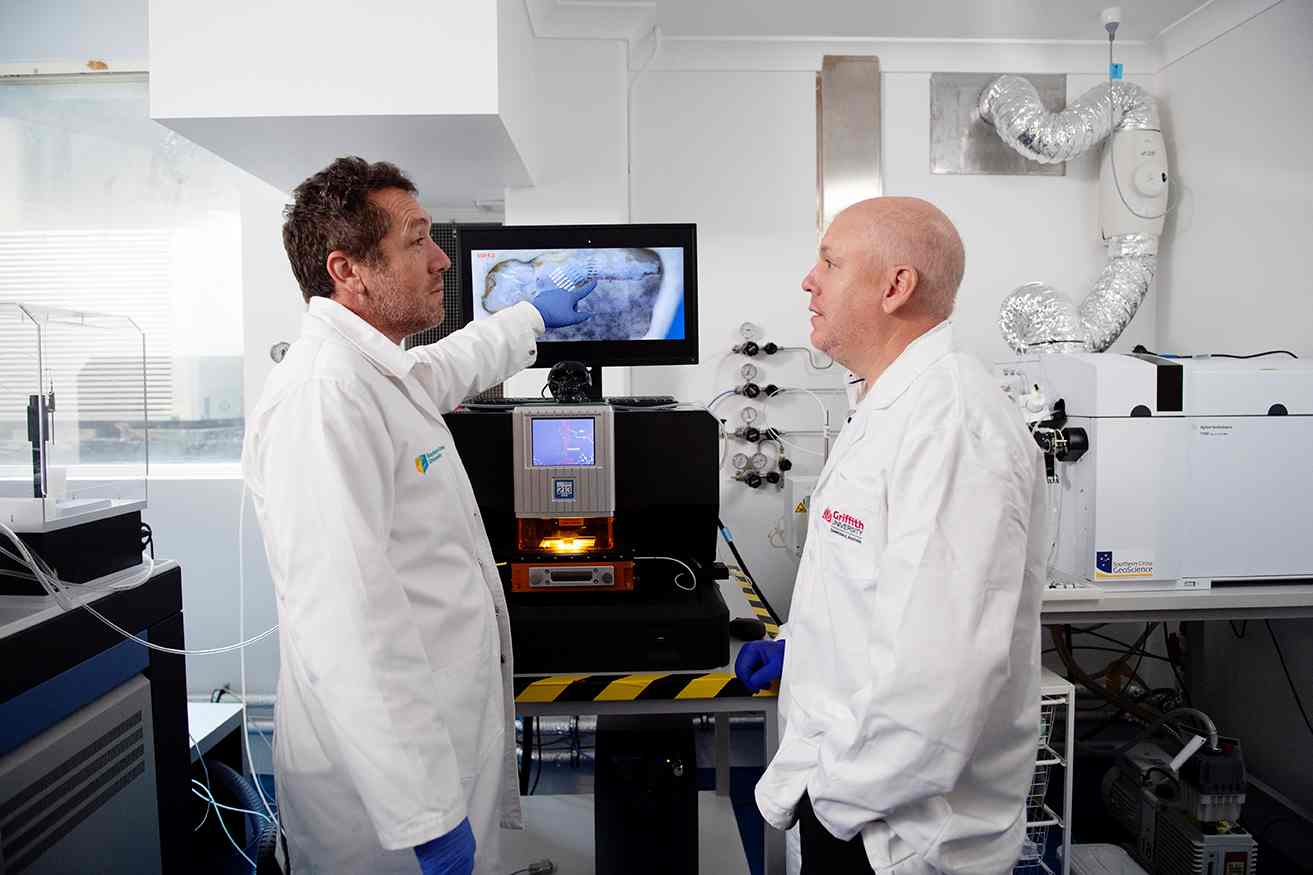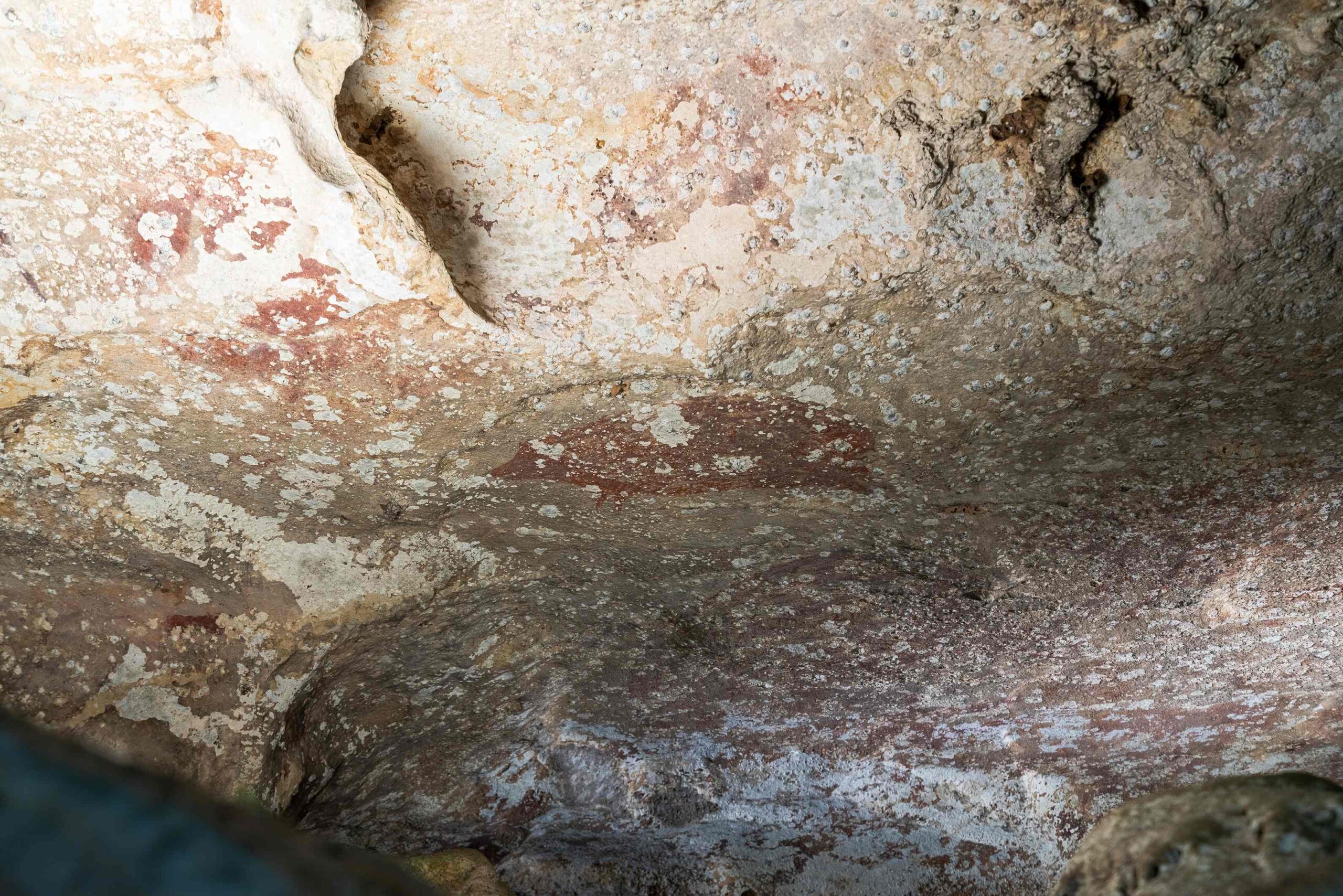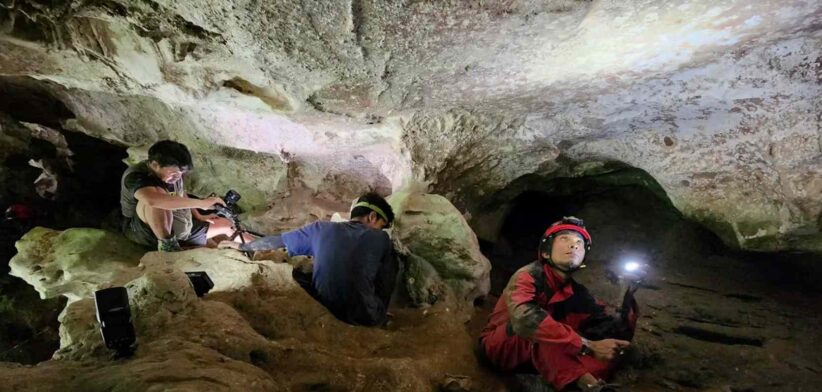More than 50,000 years ago, an artist crawled into a compact space in an Indonesian cave to document a hunting scene.
That work has now become the oldest known reliably dated human cave art, and the earliest known “narrative” art ever discovered.
The scene, painted using ochre in the Maros-Pangkep region of South Sulawesi, has been dated at 51,200 years using breakthrough technology developed at Australia’s Southern Cross University and Griffith University.
The cave art dating breakthrough was revealed in an article in the Nature journal earlier this year, attracting attention all over the globe.
Co-first author of the Nature article Professor Renaud Joannes-Boyau (an expert in archaeogeochemistry in the Geoarchaeology and Archaeometry Research Group (GARG) at Southern Cross University) said the age of the painting made it difficult to know much about the civilisation responsible for it.
There were no human remains from that period and other artefacts were limited to very few stone tools.
Despite this, Professor Joannes-Boyau said some things were clear from the nature of the painting and its location.
Firstly, the painting is a very “deliberate” piece of art rather than just a random drawing.
“If you were just recording a scene, you would most likely get access to the big part of the cave and paint on the wall that is right in front of you,” he said.
“But when you want to create a message, you would actually go and research where you are going to do it. This one is in a hard-to-get-to place where you have to climb, and where it is very narrow. You basically have to lie on your back to see the entire scene.”
This was consistent with preserved cave art around the world that had some sort of spiritual significance and was created deep into caves to help preserve it.
While the Maros-Pangkep artwork is older than anything previously dated, that area of the world has been a rich source of ancient human art.
For Professor Joannes-Boyau, this is not particularly surprising. Among his other high-profile projects was the dating of the earliest Homo sapiens at 300,000 years in Africa.
It is thought that Homo sapiens left Africa several times during their evolutionary period and were successful in moving around the world 70,000 to 80,000 years ago.
This included moving into the regions above Australia and ultimately into Australia as the part of the original human indigenous populations.
Human art could have started much earlier than 51,000 years, but it needs certain characteristics to survive over such long periods.
“If they did paint with organic material there would be no trace of it,” Professor Joannes-Boyau said. “If the art is on rocks that are exposed to environment it would last at best 30 to 40 years.
“It (ancient art) only tends to be preserved when it is not disturbed by animals, there is not too much humidity and water forms calcite on top.
“The calcite is nature’s way of creating a layer on top that is like the encasing of Mona Lisa at the Louvre.”
The laser technology used to date the cave art has some advantages over other techniques, including less damage to the site. Previously scientists had to remove chunks of calcite and mix them in a solution to date the find.
“The innovative technique we’ve pioneered enables us to create detailed ‘maps’ of calcium carbonate layers,” Professor Joannes-Boyau said.
“This capability empowers us to pinpoint and steer clear of regions affected by natural diagenesis processes, which stem from intricate growth histories. Consequently, our age determinations for rock art become more robust and dependable.”
Professor Joannes-Boyau co-developed the new LA-U-series dating method with Professor Maxime Aubert, a specialist in archaeological science at the Griffith Centre for Social and Cultural Research (GCSCR).
Southern Cross University collaborated with Griffith University and the Indonesian National Research and Innovation Agency (BRIN) to record the findings in Nature.
The cave discovery was made a decade ago by a team led by Adhi Agus Oktaviana, an Indonesian rock art specialist at BRIN.
Professor Joannes-Boyau said the cave site was well guarded and access was not possible without a specific permit. Indonesia was doing a great job preserving the site and it will likely be also the subject of international protection protocols.
“It is an important part of the entire history of humanity,” he said. “It’s the invention of art – it is very important to all of us. Just because it has been dated at 51,000 years doesn’t mean it is the oldest art ever made – but it is the oldest that we know of.”










